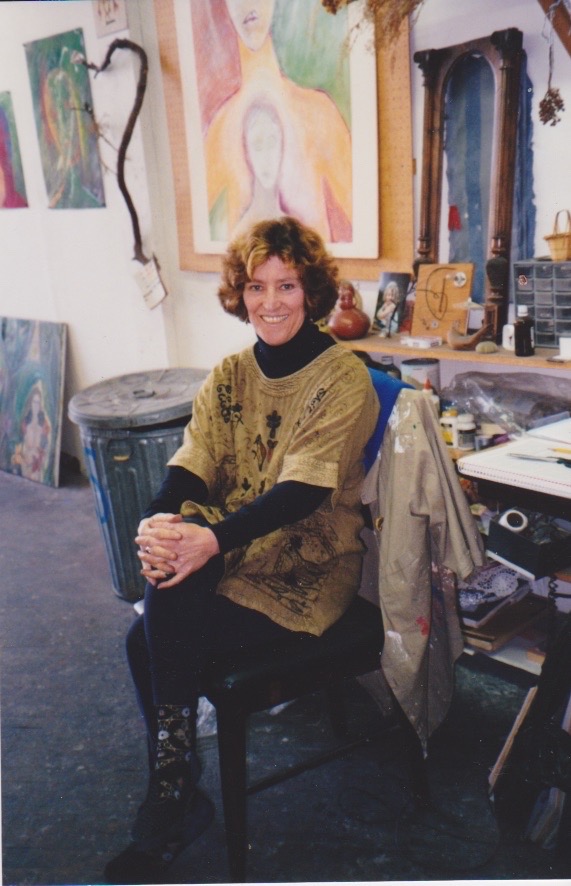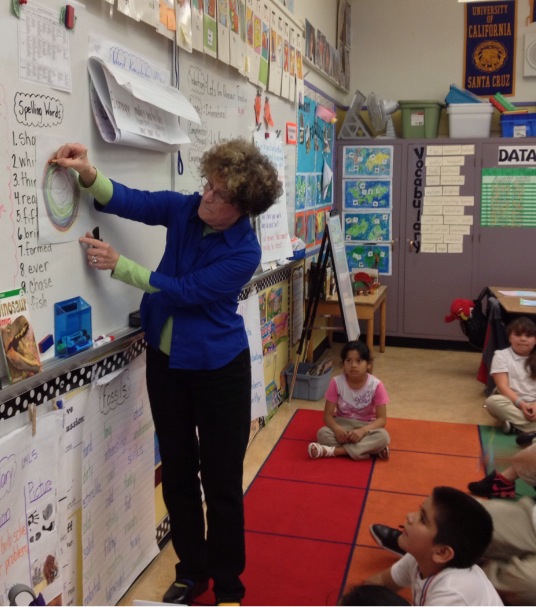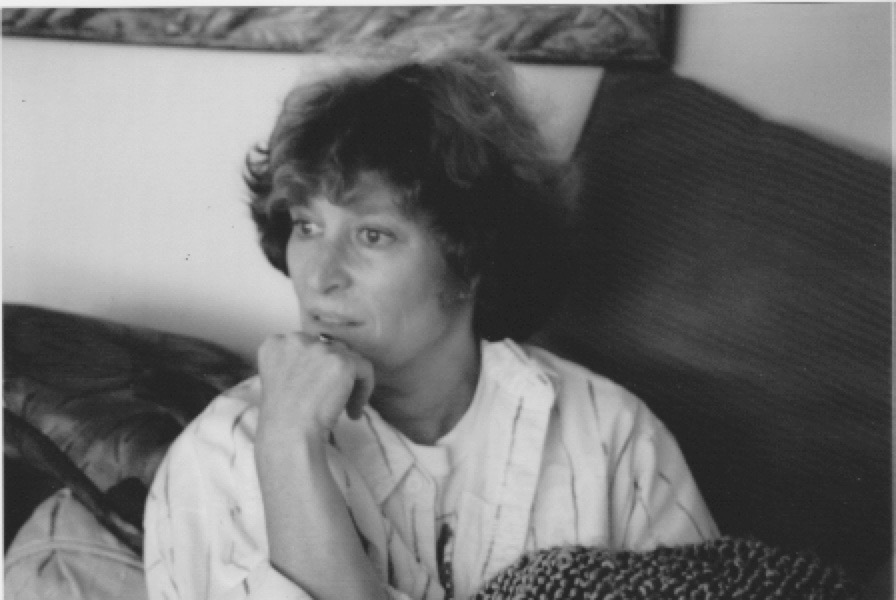Artist Statement
There are three themes that consistently appear in my work: My love of nature, women’s place in nature and the realm of the spirit. Trees have always held a special place for me in my life and in my work as an artist. They are the connection between the heaven and earth, the lungs of the planet, and they hold a rich symbolic place in almost every culture. Looking over all my old calendars and pictures of nature and trees that I had saved over the years, I found at the bottom of the pile a Jewish Prayer book of my mother’s. I opened it to a random page and began reading. The third line of the passage said, “O Eternal One, the whole earth is replete with Thy possessions.” That sentence caught me and I wrote it over and over again on a huge sheet of paper that would become the foundation layer for the collage named after the quote. Indeed, when the world was new, and even when this prayer book was published (1901) the earth was replete with the possessions that were listed in the sentences that preceded that quote - birds, animals, sea creatures, trees. But now the word “possessions” has a different meaning. Yes, the world is replete with possessions – possessions of a different kind. The reality that the process of creating our modern possessions is putting the natural world in peril informs my thinking and feeling as I create my art. My work is about paying homage to the natural world – especially trees. It is a prayer of gratitude for their beauty and inspiration.
****
At the same time as I was finishing art school I began to teach art in the public schools. I developed a
lesson called “Lines to Music.” The goal of this lesson is for students to understand that line can be used expressively. Students freely interpret music by drawing the lines it suggests. Before I ever teach a lesson, I try it out. While trying this lesson out in my studio I found such joy in the freedom it allowed me and became entranced with the variety of ways I could make a line dance across a page. This drastically changed my work. When I finished art school, my work was close in style to photo realism, I painstakingly tried to imitate on paper or canvas what I was looking at. Then, for most of a year my work was abstract and focused on line and color. I gradually found my way back to including subject matter in my work, usually faces of women and trees. However the expressive use of line is a prominent component of my work and I am indebted to my work with children for influencing my art and changing its direction.
****
For years I taught art in the Public Schools in the Bay Area. And then I began working with teachers and artists who in turn work with students. It is difficult to describe the feeling of walking into a classroom or school and seeing the halls lined with art that somehow I have been a part of creating. My belief is so strong in the power of art to reach children and in the profound value of what it teaches them that I am very proud of the influence I have had on teachers, artists and children.
****
The year before I turned 50 was one of turning inward. Looking at my face in the mirror was something I did with both dread and fascination. There were lines appearing and my conditioning as a woman in this culture had taught me to scorn the reality that I was moving closer to old age, to my own mortality. I found myself studying the faces of women my age and older. The more I looked the more I was taken with the beauty in the lines that gave visual testimonies to lives that had been lived, to fullness and ripening. Some internal decision was made to embrace the lines I saw and to tell the stories of the faces I was exploring. This exploration continues as I use the face and trees in a more generalized way. By distorting and abstracting the features and through my use of color, the faces, trees and nature become a vehicle of expression.
San Francisco Chronicle
Arlene Marilyn Shmaeff
January 3, 1941 – October 23, 2013
Arlene passed away peacefully at home, surrounded by family and friends, after an
unsuccessful but very courageous battle with a terrible form of lymphoma. She loved
family, she nurtured close friendships and she built community. She was an educator, a
mentor to many teachers and artists, and an artist and profound critical thinker herself.
She collaborated with passion and intelligence in designing strategies for teaching and
learning. She struggled for social justice and the environment. She inquired deeply into
the spiritual dimension of life and encouraged this same inquiry in those around her.
Arlene grew up in Los Angeles, and graduated from Fairfax High School and UCLA.
She taught in public elementary schools in Los Angeles and the Bay Area and at a
progressive school in Philadelphia. She received a Masters of Arts in Education
Administration at San Francisco State University in 1977. She left the classroom to
become Education Director at the Museum of Children’s Art in Oakland (MOCHA,
1994-2010), where she developed programs and curriculum and trained teachers in using
art in the classroom to foster creativity and inclusivity, in the project approach, in critical
thinking and in emotional intelligence. Later, as a consultant, she continued training and
mentoring teachers in many settings. She believed fervently in public education as a
matter of inclusivity and equity. She consulted and presented workshops for educators in
many colleges and education systems. The teachers she trained and the students they
taught learned to believe in themselves and give witness to their lives through their
journals, their art, and their music. In a time of cutbacks, Arlene fiercely believed that a
just society is built on public education, where there is a need for the arts as creative
expression as well as a primary ingredient of learning.
As an artist, Arlene created many paintings, collages and installations. She had gallery
shows, but also enjoyed sharing her work generously with friends, and they now hang on
the walls of loved ones. Seeing life itself as a canvas, she always insisted on beautifying
the environment around her, whether that be her home, the classroom, the forest, or
community spaces. She was known for her keen eye and knack of straightening pictures
on the wall. She hiked in nature daily with her dog Max, grew a gorgeous garden, and
created beauty everywhere, be it with cut flowers in the bathroom or through her loving
smile and charismatic ways.
Arlene loved family and friends and would leave no stone unturned to enrich their lives.
She leaves behind her husband of 32 years, Terry Kupers, her son Hyim Jacob Ross, her
stepsons Eric Kupers (and his husband James Wagner) and Jesse Kupers (and his wife,
Karin Graves and their children, Shiloe, Chloe and Judah) her brother Bob Shmaeff, her
beloved niece, nephews and cousins, her godson Josh Weiss and her goddaughter Bessie
Weiss.



